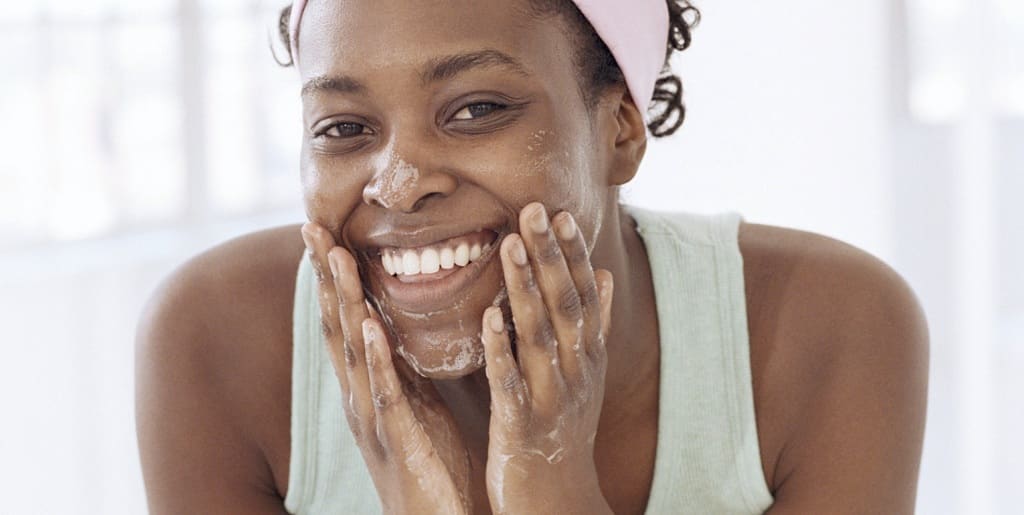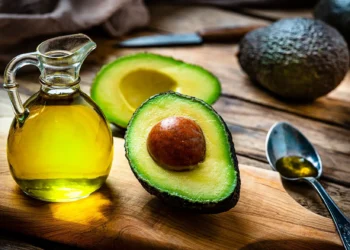Almost everyone has oily skin from time to time. Your skin naturally produces oil to hydrate and protect your skin, so some oil is good.
However, the problem arises when you have excess oil on your skin. Excess oil can lead to clogged pores, blackheads, and other blemishes which you really don’t want.
Hence, the key to preventing oily skin is to find a skincare routine that removes excess oil without drying out your skin.
You should note that oily skin is most common in your T-Zone. The T-Zone is made up of the skin on your forehead, nose, and chin. For those with oily skin, your T-Zone and other parts of your face may be excessively shiny or oily throughout the day. If your oily skin leads to breakouts, look for products specially designed for your skin types, like oil-free and non-comedogenic products.
Causes of oily skin
The causes of oily skin depend on various factors such as your gender and your skincare routine, but, there are some general underlying causes of oily skin such as:
Genetics
Age
Stress
Overwashing of skin
Environment factors
Large pores
Certain medications
Symptoms of Oily Skin
Oily skin occurs when your sebaceous glands produce more oil than your skin needs to stay healthy and hydrated.
So below are some symptoms:
- The skin on your face has a rough texture.
- Your makeup does not stay on very long, and you have to reapply throughout the day.
- You have acne-prone skin and often get breakouts, pimples, and blackheads.
- The skin on your face has a shiny appearance.
- Your skin feels or appears greasy, often by late morning or early afternoon.
- You have large pores, especially on your nose.

Skincare routine for oily skin
If you have oily skin, you will need to form a regular skincare routine that will help remove excess oil from your skin without over-drying it.
- Cleanse your skin morning and night
As you sleep, residue from your pillowcase and products in your hair can transfer excess oil and pore-clogging material to your face. So, once you wake up, use warm water to open your pores and a daily cleanser to thoroughly cleanse. Make sure to also cleanse your face at the end of the day to remove any buildup of dirt, debris, and oil. Ensure to use a cleanser with salicylic acid to deep clean your skin and keep your pores clear.
- Exfoliate skin to avoid buildup
Exfoliation is one of the most important skincare steps for oily skin. Use a face scrub with salicylic acid a few times a week to remove pore buildup and help prevent acne and breakouts.
3: Use a toner
Applying toner is an essential step for controlling oily skin. Toner will help to shrink the appearance of pores and control oil. Use toners with skin-friendly ingredients like Witch Hazel and Salicylic Acid to help reduce oil and also prevent acne.
4: Hydrate your skin with moisturizers
After cleansing, exfoliating, and toning your skin, you should apply moisturizer to your skin during the day. However, look for non-comedogenic to avoid clogging your pores.
Additional tips for oily skin
- Remove makeup at the end of the day
Your evening skincare routine is just as important as your morning one. If you have makeup on, you should begin your evening routine by removing your makeup.
- Deep cleanse
It is important to deep cleanse to remove dirt, oil, and debris on your face, but make sure you are gentle on your skin so that you don’t irritate it.
- Use facial mask
Facial masks draw out dirt and oil to help deep clean your pores. Using a face mask for 10 minutes can help remove excess oil from your skin for a tingly-smooth pore detox.
- Safely remove blackheads with a pore strip
If you have blackheads, you should safely remove them with a pore strip because excess oil sometimes leads to clogged pores as well. If your oily skin is resulting in blackheads, then, use a pore strip to safely remove blackheads without having to pick or squeeze your skin.






















